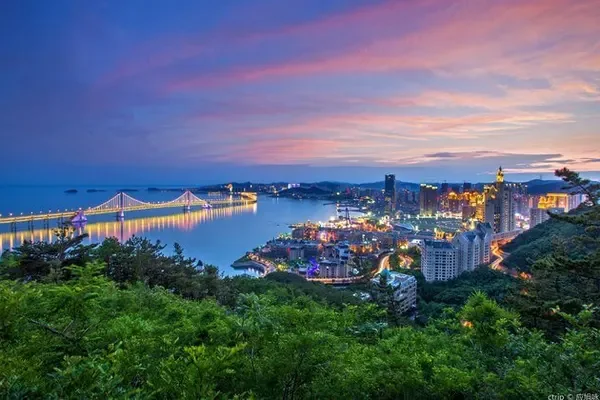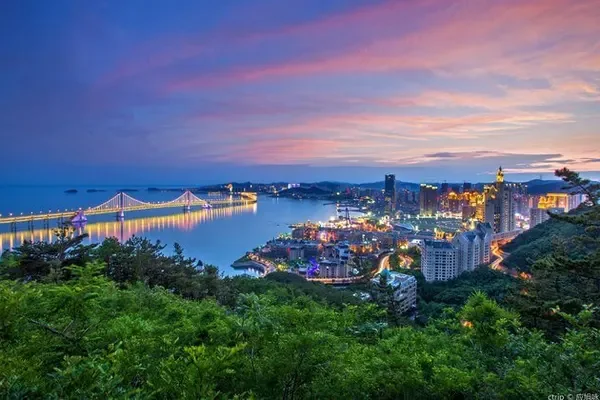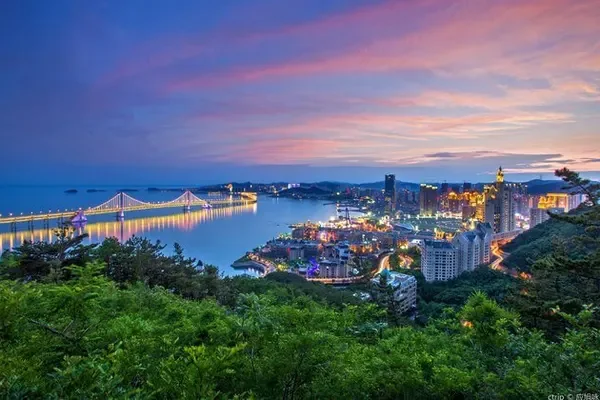In the past two days, the Internet has been swiped by a piece of news, and people are rushing to tell each other: The Beijing-Zhangjiakou high-speed railway has finally opened. The Beijing-Tianjin-Hebei region is one of the regions with the most densely distributed cities and towns in my country and the strongest comprehensive strength. A Beijing-Zhangjiakou railway has traversed 110 years. The time has recorded the history of the first railway independently designed and built by the Chinese. Now, the high-speed railway from Beijing to Zhangjiakou has opened, and Zhangjiakou has officially integrated into Beijing's 1-hour living circle.

1 The first day of opening of the Beijing-Zhangjiakou high-speed railway

On December 30, 2019, at six o'clock in the morning, I got up and came to Beijing North Railway Station. This time I will take the Beijing-Zhangjiakou High-speed Railway to Huailai in Zhangjiakou. This is the first day of the opening of the Beijing-Zhangjiakou High-speed Railway. Beijing to Huailai , From the past two and a half hours to the current 50-minute drive, the opening of the Beijing-Zhangjiakou high-speed railway has made everyone happy.


Today is a memorable day. When I walked into the waiting hall of Beijing North Railway Station, I saw many people who came to take the Beijing-Zhangjiakou high-speed railway. On this day, the world’s most advanced intelligent high-speed railway with a maximum speed of 350 kilometers per hour, Beijing-Zhangjiakou high-speed railway Stunning debut. As an important part of the east section of the Jinglan Passage in the "Eight Vertical and Eight Horizontal" of the country's "Medium and Long-Term Railway Network Planning", the Beijing-Zhangjiakou high-speed railway and the Zhangzhou-Dalian and Zhanghu high-speed railways have been opened for operation simultaneously, and the Northwest China is an important high-speed railway channel connecting the Beijing-Tianjin-Hebei region formed since then. At the same time, the 110-year-old Beijing-Zhangjiakou Railway ushered in a parallel high-speed rail line, and Zhangjiakou, a mountain city outside the Great Wall, entered the era of high-speed rail.

Let's take a look at the entire route map of the Beijing-Zhangjiakou high-speed railway, and we will know how important the opening of this high-speed railway line is to people. The entire journey of the Beijing-Zhangjiakou high-speed railway is 174 kilometers. "Drill" into the ground, go all the way north through the Tsinghua Garden Tunnel, cross the Great Wall, cross the reservoir, and finally arrive at Zhangjiakou, another venue for the 2022 Beijing Winter Olympics. The fastest running time from Beijing to Zhangjiakou will also be changed from the current 3 hours 7 Minutes compressed to 47 minutes!



Everyone’s faces are full of laughter. For us, the opening of the Beijing-Zhangjiakou high-speed railway has gone through a century of history and provided a guarantee for transportation operation services for the 2011 Winter Olympics.


I took the Beijing-Zhangjiakou high-speed railway G2505 times this time, and the carriage was boiling. When I walked into the carriage, there were pictures of festive Yuxian paper-cuts pasted on the windows. The passengers in the carriage had deep feelings for the Beijing-Zhangjiakou Railway. I came here to experience the speed of the smart high-speed rail on the first day of the opening of the Beijing-Zhangjiakou high-speed rail. On the way, the flight attendant also sang a song about the clouds of my hometown, which attracted a lot of applause. I am sincerely happy about the opening of the Beijing-Zhangjiakou high-speed rail , It used to take a long three to four hours to go from Beijing to Zhangjiakou by car. After the opening of the high-speed rail, the fastest running time only takes one hour, and I can arrive in Zhangjiakou.

Zhangjiakou is located at the junction of the North China Plain and the Mongolian Plateau, and is the western barrier of Beijing. Here are magnificent mountains and rivers, a long history, simple folk customs, and a long history of cultural heritage. Huailai County is the hometown of grapes and wine in China. This time I traveled from Beijing to Huailai. It used to take more than two hours by train. It took 50 minutes.

2 Huailai Great Wall Sanggan Winery

The first stop in Huailai, I came to Great Wall Sanggan Winery, do you know where is the first bottle of dry wine in China? Just in our arms, we walked into the Great Wall Sanggan Winery,
To feel the solemnity and elegance of Chinese red wine culture, Great Wall Sanggan Winery is located on the banks of the beautiful Sanggan River and is a world-renowned oriental winery.


Speaking of Great Wall Sanggan Winery, it can be said that it has a long history. It was founded in 1979. Because it is in the same vein as the central axis of the Forbidden City in the capital, it is called a winery on the dragon vein. When you walk in, you will be attracted by the huge red wine bottle in front of you. Well, the red wine shape composed of 10,000 red wine corks brings us into the long history of red wine development. Since its establishment in 1979, Great Wall Sanggan Winery has always carried the mission of serving wine for state banquets.


The records about wine in ancient China can be traced back to Sima Qian's "Historical Records". The good quality of Great Wall Sanggan Red Wine comes from the unique microclimate environment in the Sanggan River Basin. Here you can also see the first bottle of dry wine in China. After 30 years of polishing, Great Wall Sanggan Winery has won numerous reputations and has become the Chinese coordinate in the global winery territory. The opening of the Beijing-Zhangjiakou high-speed railway allows us to enter Huailai more conveniently and learn about Great Wall Sanggan Winery.
3 Huailai Jiming Station


Coming to Jiming Station in the cold and windy weather, the ancient building in front of you can't help but feel the vicissitudes of history. This ancient station, which once played an important role in ancient times, has remained tall and straight after more than 500 years of changing times. The posture of calmly overlooking the passage of time and the change of time. The Jiming Post was first built in the Yuan Dynasty. In 1219, Genghis Khan led his troops to the west, opened a post road on the avenue leading to the west city, and set up "zhanchi", that is, a post station.


Traveling through the smoke and clouds of history, let the time go back. Jiming Station built earthen walls in the eighth year of Chenghua in Ming Dynasty, and built a brick city in the fourth year of Longqing. It is an important station on the grassland Silk Road. Throughout the ages, many historical figures have stopped here. Jiming Station stayed for four days, Empress Dowager Cixi and Emperor Guangxu once stayed here for one night.


Jiming Post City is a precious relic of China's postal and military posts, and has high cultural value. Here we can see detailed records about the history of Jiming Post. Those past historical events have been submerged in the rolling wheels of history. Among them, the historical significance of Jiming Station is worthy of our patience. In 2003 and 2005, Jiming Station was included in the list of 100 World Heritage in Danger by the World Cultural Heritage Fund twice.

There are as many as 17 Ming and Qing temples in the city of Jimingyi, many of which are well preserved. The opening of the Beijing-Zhangjiakou Railway has shortened our journey into Huailai. A new chapter in the history of Zhangjiakou, Beijing's one-hour life circle, making travel more beautiful.


